Blue Coral
Heliopora (Blue Coral)
Class Anthozoa, Order Helioporacea, Family Helioporidae, Genus Heliopora
Common names: Blue Coral, Blue-Ridge Coral
Natural origin: Indo-Pacific
Sensitivity (Level 2): Usually a fairly tolerant, easy to care for species when fed properly.
Feeding: These corals have very small polyps and need to be fed fine particulate foods. Baby brine shrimp, oyster eggs, and other small particle foods are good. A heavily populated sand bed can also provide some good food for these corals.
Lighting (Level 6 to 10): Heliopora can adapt to a range of light intensities. Ideal lighting will depend on the depth and clarity of the water where the coral was initially collected (or cultured). Usually, more intense lighting is preferred.
Water flow: They will benefit from moderate to strong water flow.
Placement: They are peaceful corals and should be placed away from more aggressive tank mates.
General: Blue-ridge corals are quite unique with their blue, hollow skeletons. Though not a particularly fast growing coral, higher calcium levels (at least 420 ppm) are important.
Sensitivity:
Level 1 – These corals are easy to care for, good for the novice aquarists.
Level 2 – These corals require slightly more attention than level 1 corals, but are generally tolerant and forgiving.
Level 3 – These corals require stable, established aquariums and care by an experienced aquarist.
Level 4 – These corals should only be kept by the most experienced aquarists.
Level 5 – These corals are not known to be able to survive in aquariums even when under the care of the most experienced aquarists.
Note that this scale is not set in stone, but based on the numerous experiences and reports of professional and hobby aquarists. The sensitivity and tolerance of any given coral in your tank will depend on species, health when collected/purchased, how long it’s been in captivity, and other factors that may or may not be knowable.
Lighting Scale (approximations):
Level 0 – no light
…
Level 3 – one foot below modest VHO or T5 fluorescent lighting
…
Level 5 – two feet below extensive VHO or T5 fluorescent lighting
…
Level 6 – one foot below extensive VHO or T5 fluorescent lighting
Level 7 – two feet below 250 watt single ended MH light (or 150-175 watt MH with HQI ballast)
Level 8 – one foot below 250 watt single ended MH light (or 150-175 watt MH with HQI ballast)
…
Level 10 – one foot below 400 watt single ended MH (or 250 watt MH with HQI ballast)
Note that this scale is quite crude and only meant to provide a rough idea of the different levels of light intensities. How much (and what kind of) light actually reaches the corals in your tank also depends on the type of reflector in the light fixture, the temperature of the bulbs/lamps, the clarity of your tank water, etc.
It’s also important to note that different individual corals, even of the same species, can have very different lighting requirements and ideals. Often times, the same types and species of wild caught corals come from different depths and different water clarities. It’s nearly impossible to know what kind or how much light was getting to your coral when it was first taken from the wild. One advantage of aquacultured corals is that you can know what light they were grown under. Beyond health, the color of any given zooxanthellate (photosynthetic) coral will change and adapt in response to the lighting it is placed under. All corals are vulnerable to bleaching if not allowed to acclimate to a change to more intense lighting. If your coral begins to bleach, move it to an area of lower lighting and feed it especially well.
Acclimation:
Please, always take the time to acclimate new corals.
Step 1: Float the bag with the coral in the aquarium water (away from lights!) for about 20 minutes.
Step 2: Open the bag and test the salinity of the bag water.
Step 3: Add about 1/3 to 1/2 cup of tank water to the bag every 10-20 minutes until the bag water and tank water are approximately the same salinity. You can add less water over longer periods of time to acclimate more slowly for more sensitive animals (or when the bag water and tank water have substantially different salinity).
Acclimation can also be done in a bucket (rather than the transport bag). However, the bucket water temperature can get closer to room temperature than tank water temperature (especially for slow acclimations). Insulating the bucket in a Styrofoam box or cooler during acclimation should help.
To acclimate to new lighting conditions, first place the coral in a less light intense area of the tank. Every few days, move the coral towards more direct lighting until it is where you want it to be. If it begins to bleach at any point, move it back to a less light intense area. After the coral recovers, commence moving towards more direct light more slowly.
General “Disclaimer”
These care sheets are a brief presentation of the needs and characteristics of a variety of commonly kept aquarium corals. Though there’s a lot of science in reef keeping, the hobby itself has always been and continues to be an imperfect science. Much is still unknown and there is often more than one way to do things. Please take what’s written here as a starting point, but always keep an active and curious mind.
Basic Aquarium Parameters
Ammonia ( H3)
The presence of ammonia in aquarium water is the #1 killer of fish. The primary sources of ammonia are the decaying of organic material (primarily uneaten food) and excreted waste from the fishes’ gills.
An ammonia level as low as .5 part per million (ppm) creates stress upon fish compromising the natural immune system. It has been demonstrated with laboratory experiments involving koi (and thus, we assume, equally true with other fish species) that an ammonia level of 2 ppm causes the natural immune system of the fish to cease functioning. The fish does not have the strength to cope with both the ammonia related stress and disease prevention. As the elevated ammonia level presents the more immediate possibility of death, all of the fishes’ energy must be devoted to combating that threat.
The presence of ammonia any time after the nitrification cycle has completed itself is the fault of the hobbyist and must be corrected. Its reoccurrence is precipitated by (but not limited to):
• Inadequate and/or poorly maintained biological filtration.
• Overfeeding.
• Overcrowding.
• Not performing periodic water changes and gravel vacuuming.
• Allowing dead inhabitants to decay.
Ammonia problems can only be corrected by:
• Doing partial water changes and adding ammonia-digesting bacteria (Bio-Booster) until the level present approaches zero;
• By improving your individual hobbyist habits and maintenance skills.
Temporary methods of reducing ammonia levels in order of preference include:
• Suspending and/or reducing feeding.
• Dosing with Bio-Booster
• Introducing an ammonia binder into the aquarium (freshwater or pond only).
pH
In simple terms, pH is a way of indicating whether a volume of water is acid, alkaline, or neutral. pH is measured on a scale from 1.0 to 14.0, with 7.0 being neutral, below 7.0 acidic and above 7.0 alkaline. The pH required for aquatic life lies between 5.5 and 8.5, with a natural environmental variation of only a few fractions of a pH unit. Individual species will have varying demands as far as pH, and ignorance of the requirements of each species can cause the death of the animal. Always check tapwater or premixed saltwater pH before adding water to the aquarium.
pH impacts fish in two ways. First, if the pH is too low, a condition called acidosis can result. Symptoms are anorexia followed by the promotion of excess slime, isolation and resting on the bottom. Finally, visible hemorrhaging in the fins and death will result. Acidosis is rapidly corrected once the pH is brought up to a suitable range. Too high a pH can produce alkalosis symptomized by excess slime and gasping at the surface. Losses can be major and alkalosis is hard to reverse once it occurs.
A notable relationship exists between pH and ammonia in that pH contributes to the toxicity of ammonia. At higher pH values, ammonia is more toxic. Below pH 7.2 most ammonia is ionized to ammonium which is far less toxic. This has relevance if you are considering raising the pH of a system with detectable ammonia (be careful with water changes when this is occurring). The use of appropriate substrates, particularly in brackish, marine and African cichlid aquaria, will serve to stabilize the pH at the proper level
Alkalinity
Known by various other names such as “KH” and “carbonate hardness”, alkalinity, or pH stability, is the measure of the buffering capacity of the water, its ability to maintain a constant pH over and extended period of time. Buffering compounds, water changes and aragonite substrates serve to maintain a proper level of alkalinity, thus stabilizing pH.
Sea Salt: Behind the Scenes
by Stan Owens, Division Vice President; Greg Valatka, Director of Operations; Melissa Wright, Quality Engineer, Chemical Products, all from United Pet Group
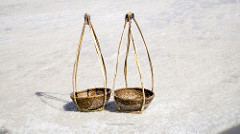 Since the development of Instant Ocean sea salt in 1964, it has grown to become the standard synthetic sea salt formula, used by more aquariums both large and small around the world. Its beginnings stem from a desire to provide a viable alternative to natural seawater — one that not only kept organisms alive, but also enabled them to reproduce and thrive.
Since the development of Instant Ocean sea salt in 1964, it has grown to become the standard synthetic sea salt formula, used by more aquariums both large and small around the world. Its beginnings stem from a desire to provide a viable alternative to natural seawater — one that not only kept organisms alive, but also enabled them to reproduce and thrive.
Whereas it might seem the most logical solution for keeping healthy fish, natural seawater that is clean of pollutants and sand is hardly accessible to the masses. Today, the most successful and well-known synthetic salt is Instant Ocean. After more than 40 years of research and usage in home and public aquariums, as well as research institutions, it has proven to be the scientifically-based synthetic sea salt in which fish and invertebrates can grow and prosper.
The Science Behind Instant Ocean
Instant Ocean is a homogeneous mixture that is fast-dissolving and produces a close match to natural seawater, but with increased buffering ability and a low total organic carbon concentration.
Remarkably, the salinity and chemical composition of major ions in natural seawater is essentially similar throughout the world’s oceans. Generally, one formula for synthetic sea salts works for varied aquarium dwellers, as they are equipped to live within tanks that adhere to very small ranges in chemical values.
Synthetic sea salts are made up of compounds like sodium chloride or magnesium chloride. When added to water, they dissolve into cations (positive charged ions) and anions (negative charged ions) at concentrations meant to mimic natural seawater. There are also a number of trace elements, and it is at the discretion of manufacturers to determine the best mixture for simulating a natural environment and providing customers with what they need for their aquarium.
Ultimately, Instant Ocean aims to stand out in three characteristics of a quality synthetic sea salt:
Choice of chemical compounds — Continuous monitoring of ammonia-free raw materials for quality and consistency. This ensures that seawater made with Instant Ocean today will be the same with every water change.
Dissolvability — Quick-dissolving formulation that doesn’t rely on lower quality chemicals or wide deviations from the composition of natural seawater. This enables customers to have a fast-acting solution that performs as it should.
Homogeneity of mix — An assurance that every bag of Instant Ocean is consistent. This results in Instant Ocean’s continued dedication to the following: If it doesn’t meet our standards, it doesn’t make it to customers.
How Do They Do It
The actual manufacturing process is just as important as the science behind creating Instant Ocean. In order to achieve its homogeneous, well-packaged and competitively-priced product, manufacturing must ensure that chemicals are clean, uniform in size, mixed in the right amount and packaged with efficiency.
Very recently, the company moved its manufacturing facilities to Blacksburg, Virginia, where its parent company, United Pet Group, has its principle chemical manufacturing center. The over 200,000 square foot facility features all new, stainless steel, pharmaceutical-grade equipment. Also, the company has a state-of-the-art, temperature-controlled laboratory dedicated solely to testing salt. This is where quality control is maintained through regular sampling and analysis. In making this manufacturing move, the company’s goal, given its long history, was to maintain and strengthen its trusted brand name in the market. Its mission remains to provide a consistent and reliable product to customers.
Over the years, and leading up to the move, modifications have been made in order to remain at the forefront of manufacturing innovation. Perhaps the most significant investment was in upgrading to computer-controlled processes. Every ingredient is now weighed on a digital scale and added by computer-controlled valves to ensure that each batch of Instant Ocean is exactly the same mix. The updates have also improved overall flexibility in manufacturing to efficiently meet customers’ orders, without compromising on quality.
Part 4d: Dry Food and Nutrition
Dr. Hubert Kuerzinger, Senior Scientist Nutrition,
Tetra Global R&D Center Nutrition
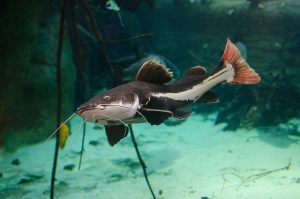 Types of marine foods
Types of marine foodsThere are a variety of different food types available for feeding marine fish, and it is important to make the right choices to ensure your fish get the balance of nutrition they need. We conclude our series with a discussion on dry food. You may catch up with previous sections on Marine Gel food, frozen food or live food online.
For freshwater fish, dry foods are widely available and generally well- accepted by the fish. For this reason, they form the main part of the diet, with frozen or live foods being offered as treats. The advantage of a high quality dry food is that, provided it is formulated and produced correctly, it will deliver a balanced diet containing everything needed by the fish. This removes the need for feeding lots of different food types, or for trying to supplement the diet (which is never a scientifically accurate process).
Dry foods are also convenient and, if well produced, will result in very little waste. The major drawback is that not all marine fish will eat them, although this situation is improving as more and more diets are reaching the market. As with freshwater fish, marine fish keepers are increasingly being advised to feed a dry food as the main part of the diet, with frozen foods used to provide additional variety.
Through improvements in diets, coupled with better advice on which fish adapt best to dry foods, it is therefore becoming easier to provide a balanced diet to marine fish.
Because feeding marine fish is not always as straightforward as feeding freshwater species, it is important both to check on requirements before purchase, and to ask about what the fish has been fed while in captivity. If you want to keep things simple, choose species that are not overly fussy, and that are likely to take a dry diet.
To see the complete line of Instant Ocean nutritional products, visit www.instantocean.com
Super-Sized Aquariums
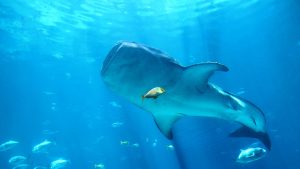 In October, we shared Part one of this article, which covered the science behind the creation of Instant Ocean Sea Salt, as well as insight into their manufacturing operation. We conclude with a look at how Instant Ocean works with some of the largest aquariums around.
In October, we shared Part one of this article, which covered the science behind the creation of Instant Ocean Sea Salt, as well as insight into their manufacturing operation. We conclude with a look at how Instant Ocean works with some of the largest aquariums around.
Whether they reside in 50 or 500,000 gallon aquariums, marine life require quality product that offers them consistent, healthy conditions. The number one characteristic that those in charge of larger, public aquariums look for is consistency in product. They want to understand that the batch of Instant Ocean they receive today will be the same a year from now, or more, as the animals in their charge have very little tolerance for change, even with the most minor trace element.
In fact, Instant Ocean is the world’s most widely used aquarium salt not only at home but also trusted in 75 zoos, aquariums and marine adventure parks, such as: Sea World, Orlando; John G. Shedd Aquarium, Chicago; Wonders of Wildlife Museum, Springfield, IL; Columbus Zoo’s Discovery Reef, OH; Georgia Aquarium, Atlanta (The World’s Largest Aquarium); The Dallas World Aquarium, TX; Underwater Adventure in the Mall of America, Bloomington, MN; Shark Reef at Mandalay Bay, Las Vegas; and many others.
Today, fewer and fewer aquariums have the ability to pump water directly from the ocean, which must still be filtered before use. And, while some still mix their own onsite, others value the consistency of working with manufacturers like Instant Ocean, along with the fact they do not have to store the necessary ingredients and equipment on their own properties.
Surprisingly, changing the water at large aquariums is much the same process as found in the home, just on a super-sized scale. The John G. Shedd Aquarium in Chicago, for instance, has over 750,000 gallons of aquariums. They may perform a monthly water change of 25%, just as most home enthusiasts would do. The aquarium dwellers, including mammals, never leave their environs. Through an elaborate system of brass valves that pump in the new mix while removing the old, a water change can be accomplished in less than one hour. Seeing the operation onsite and at scale showcases a process that is both efficient and impressive.
For over 40 years, the goal of Instant Ocean has been to produce a synthetic sea salt that mimics natural seawater, while providing optimal environments for all marine life. From the start, Instant Ocean was developed and improved upon by devoted scientists and aquarists who have a true passion for the hobby. That remains standard practice at Instant Ocean today and can be seen through its overall product consistency, dedication to innovative manufacturing processes and understanding of aquariums both small and large.
by Stan Owens, Division Vice President; Greg Valatka, Director of Operations; Melissa Wright, Quality Engineer, Chemical Products, all from United Pet Group
The Hawaiian Banded Hawkfish
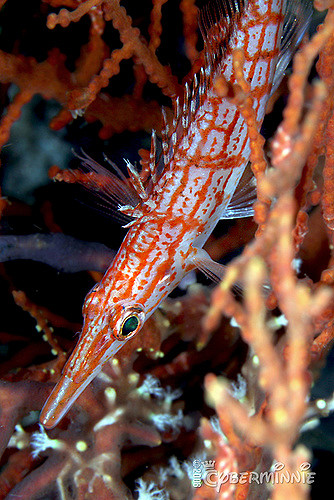 This Hawkfish, or going by its scientific name of cirrhitops fasciatus, has a bright red body with bluish-white freckles on the face and light vertical stripes along the body. Although most Hawkfish grow large, a few Hawkfish species, such as the Hawaiian Banded Hawkfish, remain fairly petite, which makes them suitable for smaller aquariums. The largest size these beautiful fish usually become is about 5 inches.
This Hawkfish, or going by its scientific name of cirrhitops fasciatus, has a bright red body with bluish-white freckles on the face and light vertical stripes along the body. Although most Hawkfish grow large, a few Hawkfish species, such as the Hawaiian Banded Hawkfish, remain fairly petite, which makes them suitable for smaller aquariums. The largest size these beautiful fish usually become is about 5 inches.
Hawkfish will eat almost any food put in an aquarium, including flake food. It should be fed meaty foods, including marine fish, mysis shrimp, crustacean flesh and foods with color enhancers to help maintain this fish’s brilliant red color.
The Hawkfish’s native environment are:
-
Madagascar
-
Reunion Island
-
Mauritius
-
Japan
-
Hawaii
These wonderful fish make a very elegant addition to your aquarium; however, make sure you put them in a tank with fish that are larger than they are. It is a threat to small fishes and crustaceans and is best housed with larger or more aggressive species.
15 Stresses In The Aquarium And Pond
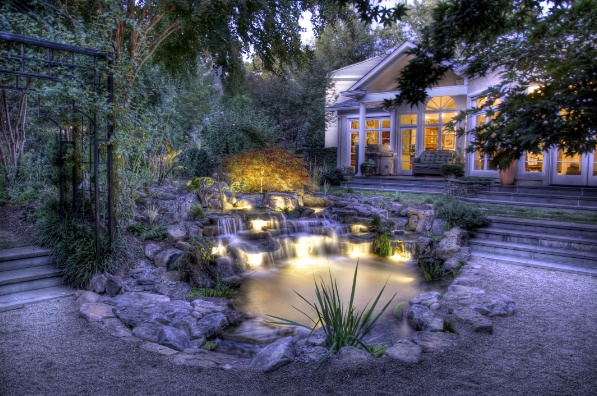 Stress is a condition in which an animal is unable to maintain a normal physiologic state because of various factors adversely affecting its well-being. It is caused by placing a fish in a situation which is beyond its normal level of tolerance. Any aquarium condition that is not good for the inhabitants may cause excess stress, which usually leads to disease and oftentimes, to death. The fifteen most common sources of stress are:
Stress is a condition in which an animal is unable to maintain a normal physiologic state because of various factors adversely affecting its well-being. It is caused by placing a fish in a situation which is beyond its normal level of tolerance. Any aquarium condition that is not good for the inhabitants may cause excess stress, which usually leads to disease and oftentimes, to death. The fifteen most common sources of stress are:
• Improper pH or drastic and/or sudden changes in pH.
• Improper temperature or sudden changes in temperature.
• Improper salinity for short or extended periods of time.
• Physical trauma such as pounding on the tank or sudden movements that scare the tank’s inhabitants.
• Aggressive tank mates. These can cause the fish to withdraw into hiding and miss out on feedings. Harassment or physical attack by tank mates leads to wounds, abrasions and further stress.
• Poor diet. Deficiencies and dietary degenerative diseases are often the cause of loss of older animals.
• High ammonia, nitrite, nitrate, or other toxin levels. A high nitrite level prevents oxygen from reaching the cells and may cause suffocation of brain damage. Detectable ammonia or nitrite is undesirable. For nitrates, there are many factors affecting toxicity and differences among species susceptibility. Keeping nitrate at less than 30 parts per million (ppm) for fish only systems or less than 10 ppm for aquariums with invertebrates are appropriate goals.
• Other toxins – chlorine, copper, detergents, iron, lead, zinc, commercial ammonia, nicotine, perfume/cologne, oil, paint fumes, and insecticides, including contaminants from dog and cat flea collars.
Too little or too much carbon dioxide, especially prevalent in systems that are either overcrowded with life or whose owners mismanage a CO2 infusion system.
• Too much, too little, or irregular periods of light. Too much light (intensity or duration) affects the metabolism of all the livestock; too little light is problematic for photosynthetic invertebrates, plants and algae. All benefit from a standard light interval of about 12 hours.
• Dirty or cloudy water. Cloudy water is usually caused by bacteria. The bacteria in the water may use up all the available oxygen or poison your animals with their metabolites.
• No hiding places to which the inhabitants can retreat to feel safe.
• Infectious and/or parasitic disease-causing organisms.
• Any other sudden changes in the environment.
• Overcrowding.
Overly stressed animals are, by definition, what we consider “sick”. Stressor’s trigger the release of hormones that prompt the animals to fight or flee, and they increase their heart rate, blood circulation, and respiration. In a worst case, continual stress will cause an animal to die of exhaustion. They may also become so weak that their immune systems no longer function, and they will succumb to diseases or conditions that would not normally affect them. Most aquarium systems have a constant supply of fungi, bacteria, and protozoa that have little or no effect on healthy animals. Sufficiently stressed, however, they may fall prey to otherwise non pathogenic organisms. Marine fishes and invertebrates are more dependent on their environment than the terrestrial examples we are more familiar with. The are totally at the mercy of their owners to provide them with proper living conditions.
Transitioning Your Fish To A Fall Diet
As water temperatures begin to dip, your pond fish will have to adjust to their surroundings. It is important to start changing fish diets to accommodate the changes these cold-blooded creatures will undergo. We recommend following a Seasonal Feeding Cycle. When temperatures are between 39°F and 50°F, a wheat-germ-based diet is best for your pond fish.
High-quality wheat-germ foods are formed from easily digestible plant ingredients, which enhance digestion and reduce the time it takes for the nutrients to be absorbed. Compared with an animal-protein-based food, a wheat-germ-based food will spend 25% less time in the intestine. This is beneficial since in low temperatures, metabolism in fish is greatly diminished. Since Koi and goldfish do not have true stomachs, a food with wheat-germ is the optimal diet to transition fish in and out of the season safely and healthily.
The Importance of Regular Water Testing
For a new pond, water should be tested once or twice a week for the first month. After the first month, once a month is acceptable, and always test after doing a partial water change. Regular testing ensures optimum water quality and also helps you to monitor the health of your pond and make necessary water adjustments.
If you suspect you have a problem with your water or fish, we always recommend testing the water first.
All tests provide valuable information about the health of your pond, and some come in easy-to-use test strips. Some all-in-one strips test for general hardness (GH), nitrite (NO2), nitrate (NO3), pH and Alkalinity (KH).
The Big Fall Clean-up
Preparing your pond for the fall and winter months is as essential as opening the pond in the spring. We call this the Big Fall Clean-up. The best time to clean the pond is before temperatures fall below 50°F, while fish are still active and will not sustain injury during the cleaning.
Cleaning the pond…
It is good to scoop out as much of the leaves and sludge as possible before winter. You may want to pump some of the water out of the pond to expose the planting shelves around the pond periphery. This will make it easier to hand-remove leaves that have adhered themselves to the pond edges and shelves. Using a hose nozzle, blast off the accumulated debris and sludge around the pond shelves and edges, and then remove remaining debris with a net or pond vacuum. When replacing the water, be sure to treat the chlorine and chloramines with a water treatment product.
Next, follow our Fall Prep Checklist:
– Cut back dead or dying aquatic plant foliage during the fall.
– Purchase a wheat-germ-based pond food developed especially for a fall diet.
– Disconnect the pump, filter and UV clarifier before water freezes. (Make sure that no water is left inside the device. Ice can damage the equipment.)
– Store UV clarifier indoors for protection.
– Store filters indoors (if manufacturer’s directions suggest).
– Sink a few clay pots or weighted-down, clean buckets into the pond to provide refuge (in place of the protective plant cover that will disappear). Frogs who have taken up residence in your garden will also benefit from a place to hibernate.
– Some breeds of fish are especially sensitive to the cold, like Fancy Goldfish. Bring them indoors.
– Purchase or have the pond de-icer ready for installation before your pond surface freezes completely.
– Sit back and enjoy the changes your pond will undergo.
Not Sure Which Filtration System Is Right For You?
Filtration Types
 Power Filter
Power Filter
The very easy to maintain power filter hangs on the back of the aquarium (easy access). Water is pulled through a mechanical filtration, using floss and insert cartridges. They also provide enough space for chemical filtration media. Within the last few years a wet dry wheel (biowheel) was developed, to provide an even larger area for bacteria to settle.
Internal filters
Internal filters usually are rectangular boxes attached with suckers on a side glass of the tank. They may have two or three sections inside, thought to divide filter materials, pump and sometimes also the water heater.
Canister Filter
A closed canister filter is where water is forced through filtration media(mechanical and/or chemical). This filter is generally placed beside or underneath the aquarium. The canister filter has the most powerful mechanical filtration system, and can be used with messy eaters. The down side is that it requires frequent cleaning. Bacteria will also settle in this filter type. Biological filtration can be improved, by placing wet dry wheels at the outflow of the canister filter.
Wet/dry Filters
Wet/dry filters achieve optimum aquarium conditions through the use of mechanical and biological filtration. These filters out perform other means of filtration and reduce maintenance time. Top mounted input provides more filter positioning options than side mounted inputs. Unique removable foam block wall provides chemical and protein skimmer return area. Slide out drip tray simplifies cleaning filter pad. Sealed top reduces salt creep and quiets filter. Included with filter are bio-balls, foam water polishing block, 36″ drain hose, 60″ return hose and instruction manual. Ideal for fresh or salt water aquariums.
Berlin Reef Sumps
The BERLIN REEF SUMP is designed with the needle wheel skimmer in mind. The sump incorporates a center chamber with a constant water level of 8” where the most popular brands of skimmers can be placed. Mechanical filtration is accomplished through 200 micron filter socks. Area for chemical media and protein skimmer return. Included with filter are foam water polishing block, 2-36″ drain hoses, 60″ return hose, and instruction manual. Ideal for salt or fresh water aquariums.
Refugiums
Refugiums are designed primarily for use on reef tanks but can be used on fish tanks that have adequate biological filtration. Refugiums work on the principal of placing algae and other marine plants in the filter and providing adequate light for them to grow. The algae remove organics, nitrates and other harmful chemicals from the water. As the algae grow, it is harvested and the harmful chemicals are removed from the tank permanently. Deep sand bed keeps nitrate at a safe level. Top mounted input provides more filter positioning options than side mounted inputs. Black refugium walls reduce light scatter and reduce unwanted algae growth in sump area. Micron sock prefiltration produces crystal clear aquarium water. Separate sock and refugium covers simplify sock removal. Refugium lid with light stand offs and light lens reduce heat, evaporation and prevent water from splashing onto light. Algae gate in refugium keeps algae from entering sump. Framed filter top adds rigidity and eliminates warping. Chemical compartment and protein skimmer return area. Included with filter are power compact lighting, refugium cover with lens, sock compartment cover, foam water polishing block, 36″ drain hose, 60″ return hose, and instruction manual. Recommended for saltwater aquariums only.
Winter Pond Keeping
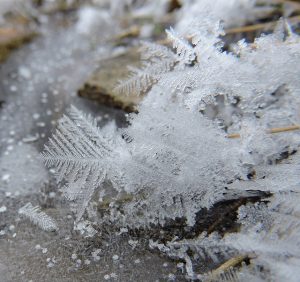 Yes, you read correctly. You can “tend” to your pond in the winter! When winter rolls around, many frustrated water gardeners can’t wait to begin working again on their water features, many of which have had little attention since November. Yet, instead of feeling restless, you can take advantage of winter to rest the pond, since aquatic (or even semi-aquatic) flora and fauna have expended much energy in the past year. During the cold weather, slowing biological processes provide protection against potential cold weather damage. Plus, the break from pond keeping will give you time to prepare for spring.
Yes, you read correctly. You can “tend” to your pond in the winter! When winter rolls around, many frustrated water gardeners can’t wait to begin working again on their water features, many of which have had little attention since November. Yet, instead of feeling restless, you can take advantage of winter to rest the pond, since aquatic (or even semi-aquatic) flora and fauna have expended much energy in the past year. During the cold weather, slowing biological processes provide protection against potential cold weather damage. Plus, the break from pond keeping will give you time to prepare for spring.
Since the pond is resting and should be left relatively undisturbed, now’s the perfect time to turn your thoughts to planning changes for the coming season. When the weather improves and water temperatures rise, how about building a new water feature and attaching it by a slow babbling stream to your current pond? Or, extending what you have at present?
With a little time, effort and attention to detail, nearly all ponds can be enhanced, extended or dramatically changed without too much trouble, and more important, without too much additional cost.
Ponds built with a flexible liner provide the most opportunities for change, since an area can be excavated to extend the pond; and, a new piece of liner may be attached to the old one without removing and rebuilding the whole pond. Rigid concrete-lined ponds offer more challenges when changes are being made; but, as long as new concrete is well-keyed, the ability to make alterations will remain. Both of these types of pond are perfect for extensions since there are few limits to their design in terms of shape and complexity, the lining material is as flexible as your imagination.
Slightly more trouble comes when extending the pre-formed fiberglass pond, but with the right knowledge (or the right contacts) and equipment, new fiberglass sections can be added to old, extending and dramatically improving the look of the water feature. Check with your local pond retailer.
Easing Into the Cooler Months
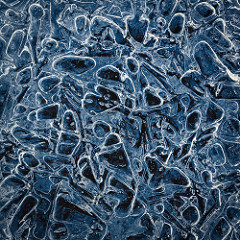 For many of our pondkeepers, October means cooler temperatures and a change in landscape. The colors of fall bring beauty to your pond, but there is more to consider as you enjoy the crisp autumn air. Last month we talked about completing your “Big Fall Cleanup.” Once that is done, you should begin making plans to protect your pond and fish over the winter.
For many of our pondkeepers, October means cooler temperatures and a change in landscape. The colors of fall bring beauty to your pond, but there is more to consider as you enjoy the crisp autumn air. Last month we talked about completing your “Big Fall Cleanup.” Once that is done, you should begin making plans to protect your pond and fish over the winter.
Caring for fish
In most parts of the United States, fish can be left in the pond during the winter, provided the depth of the pond is adequate (18 inches minimum or deeper in harsher climate zones) with little or no water circulation. Fish will gather in this deepest area of the pond, where the water temperature remains more stable, and go into a state of hibernation during the winter months. Note that some types of fish, such as fancy goldfish, bubble eyes and lion heads, are sensitive to cold weather and should be brought indoors. It’s a good idea to submerge a few pots so that your fish and other water life, such as frogs, may take shelter in the winter.
Feeding pond fish
As winter approaches, you should monitor pond water temperatures daily. As discussed last month, when the pond’s water temperature is between 39°F and 50°F, a wheat-germ-based diet is best for your pond fish. And don’t forget, when the water temperature falls below 39°F, you should stop feeding the fish altogether. Some may worry about not feeding their fish, but you can rest assured that your fish will naturally rely on stored energy reserves built up during the summer to sustain them throughout the winter months.
Don’t forget your plants
Many aquatic plants (with the exception of tropical lilies and water hyacinths) can be left in the pond through the winter. Trim back all dead foliage, and then submerge the plants in the bottom or deeper section of the pond to prevent the plants from freezing. Hardy, water garden plants will come back year after year. Consider bringing tropical lilies and water hyacinths indoors for the colder months.
Pond equipment
Use a de-icer to keep an area of the pond ice-free so pond inhabitants can breathe. De-icers help fish survive by allowing harmful gases to escape through a small ice-free opening in your pond’s frozen surface. There are energy-conserving de-icers designed specifically for ponds that are inexpensive to run. You can also melt a hole daily using a pan of warm water. Do not break the ice to make a hole, since this can harm fish and other aquatic inhabitants.
Beauty Is Root Deep
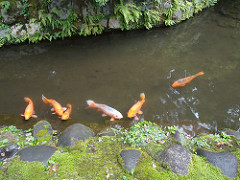 After having a conversation recently with another pond owner about plant issues, I was reminded of my painful experience with a particular species last year. I’m referring to the very popular, and very prolific, bamboo. I agree that it is an attractive plant and blends extremely well with a Koi water garden, but unfortunately it can be as destructive as it is beautiful. Several hundred species of bamboo have been imported into this country over the years by the horticultural industry for use as ornamental plants. And 24 of these are in the genus Phyllostachys, which is the most invasive and common of these plants. Although attractive from the ground up, from below they develop a dense, far-reaching and aggressive root system that is almost impossible to remove if you wish to get rid of it.
After having a conversation recently with another pond owner about plant issues, I was reminded of my painful experience with a particular species last year. I’m referring to the very popular, and very prolific, bamboo. I agree that it is an attractive plant and blends extremely well with a Koi water garden, but unfortunately it can be as destructive as it is beautiful. Several hundred species of bamboo have been imported into this country over the years by the horticultural industry for use as ornamental plants. And 24 of these are in the genus Phyllostachys, which is the most invasive and common of these plants. Although attractive from the ground up, from below they develop a dense, far-reaching and aggressive root system that is almost impossible to remove if you wish to get rid of it.
Two years ago we purchased dwarf bamboo thinking that dwarf meant small, manageable plants. Oh, were we wrong. By last year, the plants had begun to spread profusely despite our trimming. The worst part came when we realized that the reason our pond was continuously losing water was because the bamboo roots had spread under our entire stream leading to the pond. Its sharp root tips had poked hundreds of holes in the liner. Several days of removing the entire stream, rock liner, dirt and all, meant getting every possible root we could find. Any roots left, even the smallest, and you have bamboo back in no time. Again, I do like the look of bamboo, but if you decide you want to incorporate it into your water garden, I would strongly suggest keeping it confined to a container.
By Keith R. Heberling, Water Garden Expert
Why Buy a Custom Fish Tank?
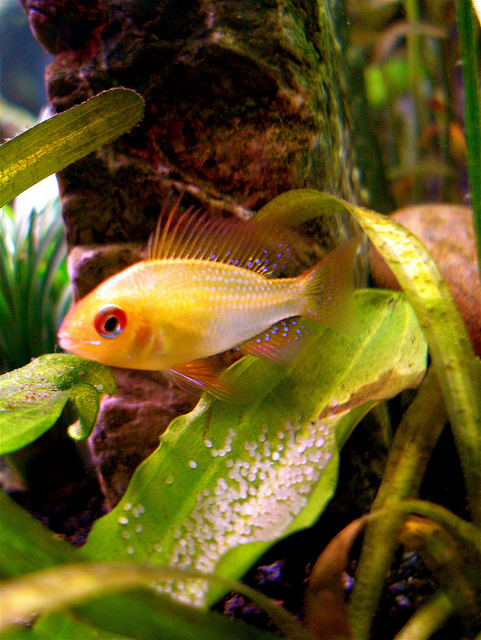 Custom aquariums are aquariums that are built based on suggestions or input from consumers. A reputable fish tank manufacturer will then take your ideas or suggestions and use them to build you the fish tank of your dreams; a fish tank that many otherwise not be found for sale online or in one of your local fish tank supply stores.
Custom aquariums are aquariums that are built based on suggestions or input from consumers. A reputable fish tank manufacturer will then take your ideas or suggestions and use them to build you the fish tank of your dreams; a fish tank that many otherwise not be found for sale online or in one of your local fish tank supply stores.
Getting a new fish tank can be very exciting, but if you get the plain store model you can be highly disappointed in the results you will get from your aquarium. When ordering a custom aquarium, you will have an opportunity to give the designer your input into how you want your custom aquarium to be built.
Benefits:
- A custom aquarium allows you to literally have the aquarium of your dreams.
- You can set it up just the way you want it with all the extra’s you want.
- Special features added and holes drilled in the exact areas you want.
- Impress anyone visiting your home or clients visiting your office.
- Calming and tranquil energy to your home or office.
As you likely already expect, custom aquariums do cost more money than pre-built aquariums. Despite the increase in cost, remember what you are getting. A custom aquarium allows you to literally have the aquarium of your dreams.
Aquarium Fish and the Associated Health Benefits
 Studies have shown that gazing at aquarium fish reduces stress and subsequently lowers blood pressure. Due to their graceful swimming, color and elegant physical appearances, aquarium fish have become creatures that are very pleasing to our eyes. The peaceful nature and attractiveness of an aquarium has been shown to also significantly reduce stress and blood pressure levels. Even gazing at a decorative fish-less tank has proven to assist in reducing stress and high blood pressure. The more attractive your tank is, the bigger the health benefits will be. Here are some health benefits to look at:
Studies have shown that gazing at aquarium fish reduces stress and subsequently lowers blood pressure. Due to their graceful swimming, color and elegant physical appearances, aquarium fish have become creatures that are very pleasing to our eyes. The peaceful nature and attractiveness of an aquarium has been shown to also significantly reduce stress and blood pressure levels. Even gazing at a decorative fish-less tank has proven to assist in reducing stress and high blood pressure. The more attractive your tank is, the bigger the health benefits will be. Here are some health benefits to look at:
Aquarium Benefits Alzheimer’s
Alzheimer patients ate more, and required fewer supplements after an aquarium was placed in the dining room. They also exhibited less physically aggressive behaviors.
Therapeutic
The therapeutic use of pets as companions has gained increasing attention in recent years for a wide variety of patients -people with AIDS or cancer, the elderly, and the mentally ill. Animals provide a constant source of comfort and focus for attention. Animals bring out our nurturing instinct. They also make us feel safe and unconditionally accepted. We can just be ourselves around our pets.
Heart Attacks
Research has shown that heart attack victims who have pets live longer.
Whether it’s a saltwater aquarium, or a freshwater aquarium, watching those beautiful fish going about their daily business is great for your stress levels and your blood pressure. Numerous studies have shown that watching aquarium fish can make you feel calm, reducing feelings of anxiety and so help bring down your blood pressure. Now we know why so many doctor’s and dentist’s waiting rooms have aquariums; you’ll feel that bit more chilled by the time you get to see your physician.
The Blue Angelfish
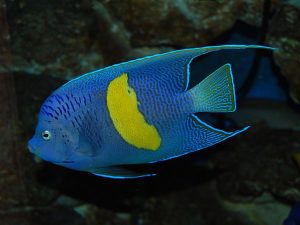 The Blue Angelfish is a very beautiful fish found in the Gulf of Mexico, Florida, Bermuda and the Bahamas. The juvenile Blue Angelfish is quite different from that of the adult. Juveniles are dark blue with a yellow tail, a yellow area around the pectoral fins, and brilliant blue vertical bars on the body.
The Blue Angelfish is a very beautiful fish found in the Gulf of Mexico, Florida, Bermuda and the Bahamas. The juvenile Blue Angelfish is quite different from that of the adult. Juveniles are dark blue with a yellow tail, a yellow area around the pectoral fins, and brilliant blue vertical bars on the body.
Feeding
This small blue angelfish survives mainly on sponges. They enjoy all kinds of live, frozen, and prepared formula foods. Best to feed small amounts several times a day. A good formula that can be made at home consists of mussels, shrimp, squid, and spinach.
Interesting Facts
Adult blue angelfish are generally found in pairs year round, so it is very likely that the male and the female mate for life. Pairs will spawn by slowly rising up in the water column while bringing their bellies close together, and releasing large amounts of eggs and sperm.
A female can release anywhere from 25 to 75 thousand eggs each evening. The eggs are transparent, pelagic, and each contains a single drop of oil to provide buoyancy. The eggs will hatch in 15 to 20 hours. Growth is rapid and 3 to 4 weeks after hatching the fish will reach about 15-20mm and will settle on the bottom.
Recommended Tank Size
The Blue Angelfish requires a large aquarium of about 250 gallons. The tank needs to be equipped with plenty of hiding places so it is okay to decorate it with live rock. Just remember that the Blue Angelfish needs to be able to hide and swim, as it enjoys both activities. The temperature within the tank should be about 72 – 78 degrees Fahrenheit with a pH level of 8.1 – 8.4.
